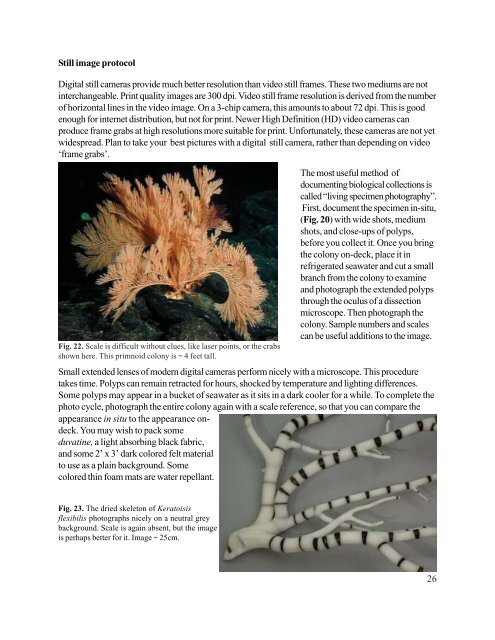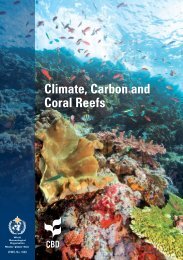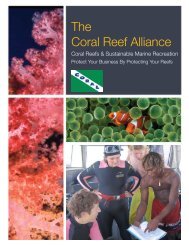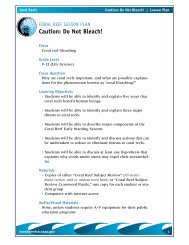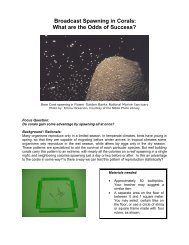Deep-Sea Coral Collection Protocols - NOAA's Coral Reef ...
Deep-Sea Coral Collection Protocols - NOAA's Coral Reef ...
Deep-Sea Coral Collection Protocols - NOAA's Coral Reef ...
- No tags were found...
You also want an ePaper? Increase the reach of your titles
YUMPU automatically turns print PDFs into web optimized ePapers that Google loves.
Still image protocolDigital still cameras provide much better resolution than video still frames. These two mediums are notinterchangeable. Print quality images are 300 dpi. Video still frame resolution is derived from the numberof horizontal lines in the video image. On a 3-chip camera, this amounts to about 72 dpi. This is goodenough for internet distribution, but not for print. Newer High Definition (HD) video cameras canproduce frame grabs at high resolutions more suitable for print. Unfortunately, these cameras are not yetwidespread. Plan to take your best pictures with a digital still camera, rather than depending on video‘frame grabs’.Fig. 22. Scale is difficult without clues, like laser points, or the crabsshown here. This primnoid colony is ~ 4 feet tall.The most useful method ofdocumenting biological collections iscalled “living specimen photography”.First, document the specimen in-situ,(Fig. 20) with wide shots, mediumshots, and close-ups of polyps,before you collect it. Once you bringthe colony on-deck, place it inrefrigerated seawater and cut a smallbranch from the colony to examineand photograph the extended polypsthrough the oculus of a dissectionmicroscope. Then photograph thecolony. Sample numbers and scalescan be useful additions to the image.Small extended lenses of modern digital cameras perform nicely with a microscope. This proceduretakes time. Polyps can remain retracted for hours, shocked by temperature and lighting differences.Some polyps may appear in a bucket of seawater as it sits in a dark cooler for a while. To complete thephoto cycle, photograph the entire colony again with a scale reference, so that you can compare theappearance in situ to the appearance ondeck.You may wish to pack someduvatine, a light absorbing black fabric,and some 2’ x 3’ dark colored felt materialto use as a plain background. Somecolored thin foam mats are water repellant.Fig. 23. The dried skeleton of Keratoisisflexibilis photographs nicely on a neutral greybackground. Scale is again absent, but the imageis perhaps better for it. Image ~ 25cm.26


